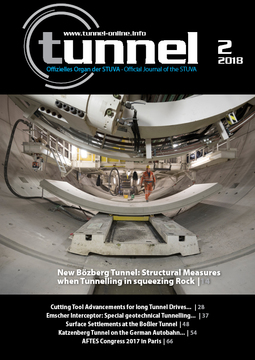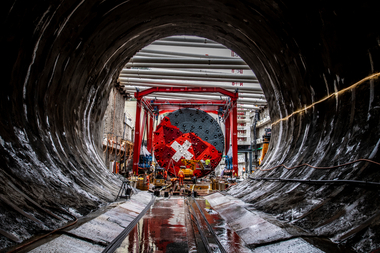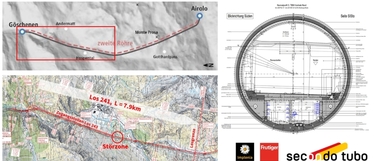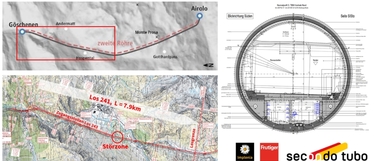Gotthard Road Tunnel: Second Tube to be built from 2020
Following a resolution by the Swiss Federal Council dated October 25, 2017, the Federal Roads Office (FEDRO/ASTRA) will draw up a plan for executing the second Gotthard Road Tunnel tube, which will be presented to the Swiss Department for Environment, Transport, Energy and Communications (DETEC/UVEK) for approval. According to the current level of planning, construction work will commence in 2020 at the earliest.
After the referendum from February 2016, the Swiss Federal Council established the rough planning and the most essential benchmarks for the Gotthard Road Tunnel in the form of the “General Project”. In keeping with this plan, the second tunnel tube will be driven through the Gotthard Massif parallel to the existing roughly 17 km long tunnel at a gap of some 70 m. The two portal structures in Göschenen and Airolo as well as the four existing ventilation shafts will be utilised.
The implementation project will be passed on to the DETEC for approval – including the legal processing of any objections. Work on the second tube is due to start in 2020 at the earliest in keeping with the current level of planning. Roughwork will probably be finished by 2025 and the second tube will presumably be opened in late 2027 after all furnishings and tests are concluded. According to the latest forecast the project will cost around 2 billion Swiss francs (roughly 1.7 billion euros).
Once the second tube is completed, all traffic will run through it bidirectionally so that the existing tunnel can be redeveloped from 2028 till 2030. Then the two tubes will become unidirectional in accordance with the constitutional resolution governing Alpine conservation. One lane per direction will be reserved for traffic, the other serving as breakdown lane. This will result in a maximum capacity of 1000 car units per hour, corresponding to the capacity of the existing tunnel. Thanks to the exclusion of two-way traffic in the Gotthard Road Tunnel, safety will be substantially enhanced in comparison to today as frontal and grazing collisions will be avoided.
G.B.




